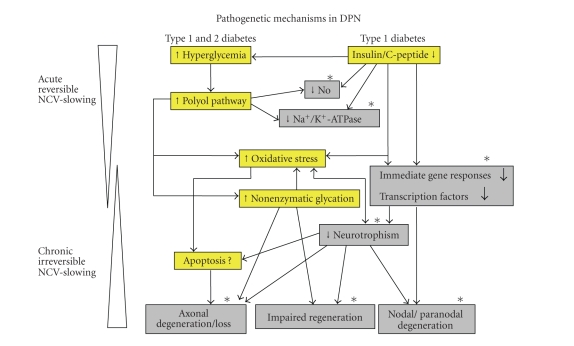Figure 1.
Scheme of pathogenetic events in type 1 (hyperglycemic and insulin and C-peptide deficient) and type 2 (hyperglycemic) BBZDR/Wor-rats. Insulin and C-peptide deficiencies add significantly to early metabolic abnormalities such as Na+/K+-ATPase and NO activities underlying the acute and reversible nerve conduction defect (dark gray). Subsequent changes with respect to gene regulatory mechanisms and suppression of major neurotrophic factors and their receptors lead to severe axonal degeneration, atrophy, and loss; nodal and paranodal degenerative changes; and impaired nerve fiber regeneration (dark gray). Such changes are responsible for the chronic and increasingly irreversible nerve dysfunction, which are more severely expressed in type 1 diabetes. Mechanisms on which C-peptide has preventive or corrective effects are indicated with (*).

